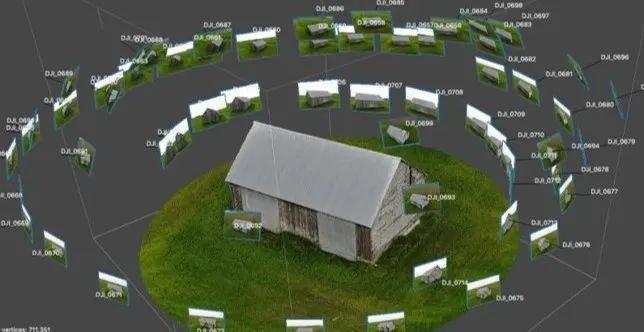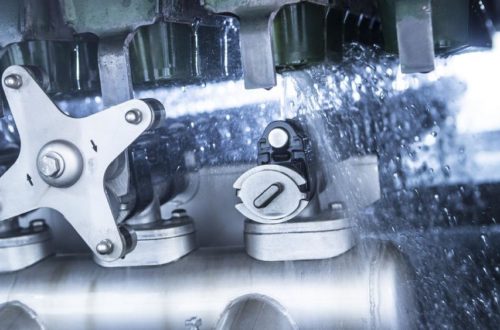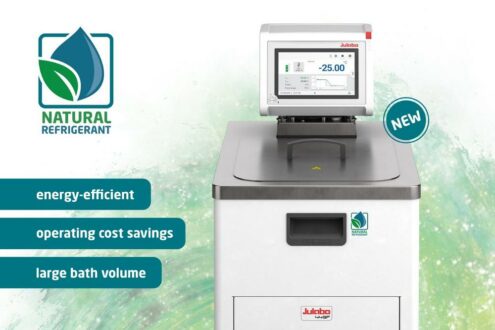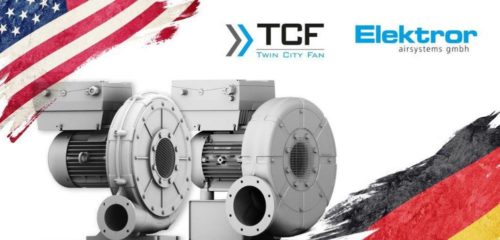
What Is Photogrammetry? Exploring SHINING 3D’s Patented Binocular Photogrammetry
What is photogrammetry
Introduction to photogrammetry
Photogrammetry is a technology that uses a camera or combination of cameras to measure the shape, size, and spatial position of a subject. In short, this technique uses photography as a tool and measurement as a purpose to extract information from a 2D image and construct a 3D model.
Why photogrammetry is applied in the 3D scanning industry
3D scanning integrates optics, mechanics, electronics, and algorithms to measure and capture the spatial structure, dimensions, and color textures of objects, creating accurate digital 3D models. This technology converts physical objects into detailed point clouds and color data that computers can process. The process involves stitching together data from markers, features, or textures, which can introduce errors. These errors tend to accumulate, particularly when scanning large objects ranging from several meters to tens of meters in size.
To minimize the cumulative error, photogrammetry technology is introduced to high-accuracy 3D scanning. A high-accuracy handheld 3D scanner can be used to efficiently obtain dense point cloud information of the measured parts with markers; while photogrammetry equipment shoots scale bars arranged around the parts and the markers on the surface of the parts at multiple angles to form high-accuracy markers and coded targets framework in the software. The combination of the two data can control the global accuracy of 3D scanning of large-size objects.
Traditional independent industrial photogrammetry system
In traditional industrial photogrammetry, coded targets and markers are placed on and around the object’s surface. High-resolution cameras capture the object from various angles and positions, producing a series of photos. These photos are then imported into software that automatically calculates the spatial positions of the coded targets and markers. The resulting data files can be imported into 3D data acquisition software, providing complete 3D data.
Disadvantages
- Multiple angles and photo requirements: Requires users to stand at multiple angles around large parts and take numerous photos from fixed points.
- High learning curve: Necessitates operators to have extensive experience to ensure stable accuracy.
- Complex coded targets setup: Traditional photogrammetry systems require coding points to determine three-dimensional spatial relationships. The process of arranging coding points is complex, and larger objects require more coding points, which is time-consuming.
SHINING 3D’s patented built-in binocular photogrammetry
Different from traditional photogrammetry methods, SHINING 3D’s patented built-in binocular photogrammetry technology eliminates the usage of coded targets, reducing preparation time by at least half while maintaining the same high level of volumetric accuracy.
FreeScan UE Pro, FreeScan UE Pro2, FreeScan Trio, and FreeScan Trak Pro2 all feature this advanced built-in photogrammetry technology. By replacing high-resolution cameras with high-precision handheld 3D scanners and integrating photogrammetric scales, these models simplify the process. They eliminate the need to arrange coding points and utilize powerful algorithms to quickly establish the spatial position of large-scene target frames. This approach efficiently manages the global accuracy of 3D scanning for large-sized objects.
How to use our photogrammetry
To capture accurate mesh data with a handheld 3D scanner, first take multi-angle shots of well-calibrated scale bars positioned around the object. The scan software will detect markers and coded targets on the scale bars, using them to ensure overall accuracy when scanning large objects.
Take FreeScan UE Pro2 as an example, which has a built-in binocular photogrammetry function. Without the use of coded points, accurate measurement results can be efficiently obtained in the photogrammetry mode, with a volume accuracy of 0.02 mm + 0.015 mm/m. The video below demonstrates the complete workflow.
Advantages of innovative built-in photogrammetry
Global accuracy control: The 3D scanning equipment features an integrated design with a built-in photogrammetry function, making it versatile and adaptable to various object shapes. It efficiently controls the global accuracy of 3D data for large workpieces.
Efficient, stable and easy to use: Utilizing continuous full-angle shooting, there’s no need for fixed-point shooting at specific angles. The measurement process is straightforward, allowing even novices to capture all angles and maintain stable accuracy.
Real-time data display: Results are shown through real-time video streaming, providing high visibility. Missing angles can be quickly supplemented to ensure overall dimensional accuracy.
Convenient and flexible operation: With strong environmental adaptability, the equipment can perform photogrammetry on super-large and heavy workpieces without needing to move to an open area.
Conclusion
SHINING 3D’s high-accuracy 3D scanning technology, combined with built-in photogrammetry, delivers an accurate and efficient optical measurement solution deeply embedded in the industrial manufacturing sector. This advanced technology, featured in models like FreeScan UE Pro, FreeScan UE Pro2, FreeScan Trio, and FreeScan Trak Pro2, supports every stage of production. It helps companies accelerate product development, enhance production efficiency, and improve product quality, leading to more refined manufacturing processes.
Contact us for more details on how our technology can benefit your operations.
SHINING 3D, founded in 2004, is pioneering independent research and the development of 3D digitizing and additive manufacturing technologies, owning over 300 patents and more than 100 copyrights. SHINING 3D is well-positioned in the market and has the capacity to manufacture 3D products at a large scale, offer powerful 3D digital technologies, and provide strong support service worldwide. SHINING 3D’s mission is to improve the efficiency of high-quality 3D modeling, to enable flexible production of high performance, complex structure parts, and to make 3D digitizing and additive manufacturing technologies accessible to all; from large multi-national corporations worldwide to at home hobbyist.
Providing solutions covering “3D Digitizing – Intelligent Design –Additive Manufacturing” for industrial manufacturing, healthcare & life science, product customization and education, etc. SHINING 3D promotes the 3D digital solution at a large scale by offering from end-to-end, easy-to-use and cost-effective products.
Shining 3D Technology GmbH
Breitwiesenstraße 28
70565 Stuttgart
Telefon: +49 (711) 28444089
https://www.shining3d.com
E-Mail: tianyesiji@shining3d.com
![]()





